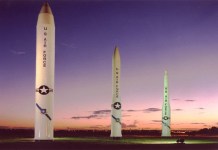The UAE has placed an order for two additional GlobalEye spy planes in a deal worth $1 billion, Swedish aerospace giant Saab announced on Monday. The contract is an extension of the deal signed in 2015, which included three GlobalEye aircraft.
Indian Army Goes All Out To Eliminate Terrorists From The Kashmir Valley But Families Cry Foul
The GlobalEye planes involved Bombardier Global 6000 business jets which are equipped with Saab’s Erieye long-range radar and other surveillance sensors.
The deal included an option for purchasing two additional planes, which have now been exercised by the UAE. Saab Chief Executive Officer, Micael Johansson said in a statement, “We are proud that the United Arab Emirates continues to show great trust in Saab and our solutions,”
“It shows that Saab remains on the cutting edge regarding advanced technology. The Global Eye program is running according to plan and we have efficient cooperation with the customer.”
Built by the Stockholm-headquartered Saab, GlobalEye is a multi-role airborne early warning & control (AEW&C) platform. It consists of a suite of sensors that use the Erieye ER (extended range) radar and mission system.
The Global 6000-series business and VIP jet is a popular platform for intelligence gathering and early warning. According to Saab, it can book the deal on the 2020 balance sheet as the contract was signed on December 30.
The work on the two new aircraft is expected to be finished by 2025. Under the 2015 deal signed with Saab, the UAE received its first GlobalEye plane in the spring of 2020, just at the onset of the Covid-19 pandemic.
GlobalEye, with its combination of modern active and passive sensors, provides long-range detection and identification of objects in the air, at sea, and on the land.
AWACS is a key system of modern warfare as it can detect and track incoming fighters, cruise missiles, and drones much before ground-based radars. It can provide friendly fighters during air combat with information on enemy jets. It also keeps tabs on enemy troop build-ups and the movement of warships.
Follow EurAsian Times on Google News




